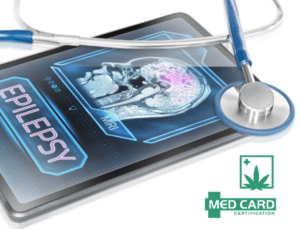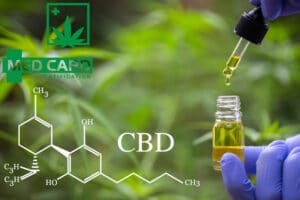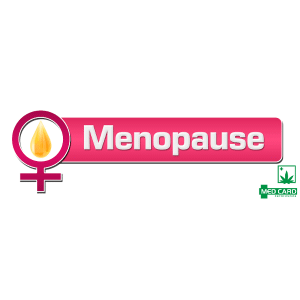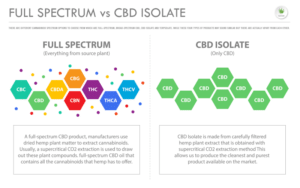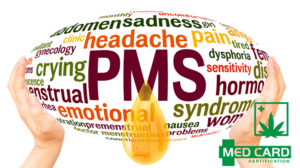
How Medical Marijuana Helps Treat Complex Regional Pain Syndrome (Types I & II)
- Using medical marijuana to treat Complex Regional Pain Syndrome types I & II
- What causes CRPS?
- Studies on medical marijuana for CRPS
- How to use medical marijuana to treat CRPS
Can medical marijuana be used to treat Complex Regional Pain Syndrome? Scientific research and anecdotal evidence show that cannabis can provide some CRPS patients with relief.
CRPS comes in two types — Type I and Type II. Both are mysterious and debilitating conditions that affect millions of individuals worldwide. This excruciating disorder may arise after an injury or trauma causes severe abnormalities of the peripheral nerve. These abnormalities may obstruct the nerves from communicating after an injury has been sustained, resulting in the onset of CRPS.
CRPS is far more common in women and can present in any age group with a peak around the age of 40. This condition is rare in children, as well as the elderly population, as both age groups experience less inflammation after sustaining an injury.
Research shows that patients who develop either CRPS-I or II indicate an excessive response to any pain trigger due to abnormalities in the linings of their peripheral nerves. These anomalies may initiate an inflammatory response, hindering the ability of those particular nerves to communicate after trauma has been sustained.
Sadly this insidious condition has no cure. Its symptoms are often treated with opioids, steroids, or surgery.
Opioids come with a host of untenable side effects such as liver damage, constipation, and in many cases extreme dependence and addiction.
Steroids also have harmful side effects and can only be taken safely for short periods of time. In the long term, they can cause weight gain, muscle weakness, insomnia, GI issues, and osteoporosis. Additionally, they may also cause or exacerbate psychiatric issues such as anxiety, depression, and psychosis.
Surgery is a risky option that could make symptoms worse. In the 20th century, studies concluded that the disease was connected to the sympathetic nervous system. A common method to counter the painful symptoms was surgically removing the affected nerve in a procedure known as a sympathectomy.
Patients with CRPS are also treated with physical and occupational therapy, spinal cord injections, local anesthetic, nerve blockers, and Botox injections. Anti-anxiety and antidepressants are regularly prescribed and can induce unpleasant side effects, as can all the medications used to treat CRPS.
Medical marijuana may offer a safe and effective treatment for chronic pain, as well as the anxiety and depression associated with CRPS types I & II, without any long-term side effects.
Recent studies are encouraging. And medical marijuana doctors have reported marked improvements for CRPS sufferers who use medical marijuana and cannabinoid-infused medicines.
Trauma and chronic pain are known to significantly deplete cannabinoids produced by the body’s inherent endocannabinoid system (ECS). The application of medical marijuana has been shown to simultaneously interact with and replenish a deficient ECS, resulting in symptom relief.
How and why medical marijuana may effectively treat the symptoms of CRPS as well as which strains of marijuana and which cannabis products offer the most relief from physical and psychological pain?
CRPS TYPE I
CRPS is a debilitating chronic pain syndrome. It is alternatively known as reflex sympathetic dystrophy.
CRPS Type I is the most common form of the disease. This mysterious disorder usually affects one extremity, often an arm or a leg.
CRPS Type I isn’t specifically related to nerve damage, but often manifests after an injury. About 90 percent of people with CRPS develop it after a specific injury.
Some of the types of trauma associated with the onset of CRPS include:
- Sprains
- Cuts and bruises
- Breaking a bone
- Burns
- Surgery
- Having an immobilized, broken limb in a cast
- Receiving an injection, such as a flu shot, blood test, or vaccine
In some cases CRPS I symptoms are not long-lasting, and simply resolve of their own volition. In more severe instances, as the disorder progresses, an individual may eventually experience a loss of mobility in the affected limb.
CRPS Type II
CRPS Type II is an intensely painful neurological disorder. The condition is also referred to as “causalgia.”
This condition usually manifests after the peripheral nerve running from the spine and brain to the patient’s extremities has sustained trauma or injury. The source of the pain resides in the “brachial plexus,” the nerve group extending from the neck to the arm.
In most cases involving Type II CRPS, the patient will have sustained observable trauma to the nerves. Conversely, Type I patients indicate no visible nerve damage.
CRPS II can be the result of:
- A fracture
- Sprain
- Surgery
- Soft tissue injury
- Burns
- A crushing injury (slamming your finger in a car door)
- Amputation
Other causes and conditions:
- Infections
- Heart attack
- Stroke
- Autoimmune response to trauma
How does medical marijuana help treat CRPS?

Studies are further examining the role of a compromised endocannabinoid system in the development of CRPS and the associated symptoms.
We know that the endocannabinoid system plays a huge role in pain relief as well as controlling the inflammatory response. But how and why does it function in this area? And why would it benefit CRPS patients?
The ECS modulates pain transmission via neural pathways. The body is capable of producing its own endocannabinoids in the central nervous system. These compounds are essentially circuit breakers that can buffer and reduce pain sensations.
If nerve damage is sustained, it causes a cellular disturbance that can trigger pain in nerve endings. Cannabinoids are known to effectively mitigate nerve pain by altering these cellular disturbances and functions.
Both THC and CBD help to regulate the central nervous system and the production of neurotransmitters, thus eliminating pain in some patients.
Cannabinoids also affect the endorphin system, triggering a release of dopamine and serotonin that can lessen the perception of pain. This release of endorphins is also known to relieve psychological issues such as depression and anxiety, both common conditions plaguing CRPS sufferers.
Cannabis also contains powerful terpenes, the compounds that give marijuana its distinctive aromas and flavors. Some terpenes initiate an anti-inflammatory, antidepressant, and anti-anxiety response when combined with THC and CBD. This interaction of cannabinoids and terpenes found in medical marijuana is known as the entourage effect.
Studies on medical marijuana’s effects on CRPS I & II
In 2012, a report in the Journal of Neurology, Neurosurgery, and Psychiatry reviewed a study involving a group of CRPS patients after administering marijuana-extract pills for treating pain and muscle stiffness. Almost 29 percent of the participants who were given the cannabis pills experienced a significant reduction in stiffness. The patients also indicated a decrease in pain and muscle spasms.
In a later study published in the Journal of Pain in 2013 researchers documented the effect of vaporized marijuana on neuropathic pain. Some of the participants suffered from CRPS-I and others were afflicted with other types of nerve pain. The patients were then split into three groups. One group received a medium dose, one a low dose, and the third group got a placebo. The patients who were administered the low and medium cannabis doses reported noticeable pain reductions with no discernable side effects.
In a 2014 clinical study from PMC titled, “Low Dose Vaporized Cannabis Significantly Improves Neuropathic Pain,” the authors stated that the treatment was, indeed, effective at relieving pain. Psychoactive effects were minimal and well-tolerated, and neuropsychological effects were of limited duration and readily reversible within 1–2 hours.
How medical marijuana is used to treat CRPS
- Smoking medical marijuana and vaping cannabis oil offer the fastest ways to get cannabinoids into the system for rapid pain, depression, and anxiety relief. Smoking and vaping aren’t for everyone though, and people with respiratory issues and high blood pressure are wise to avoid these delivery methods.
- Cannabis concentrates including rosin, crumble, wax, and shatter are high-potency options. Only tiny amounts are needed for almost instantaneous relief. Concentrates are best ingested via a vape pen or dabbing rig. Concentrates can also be mixed with dried flower and rolled into joints or smoked in a pipe. They can also be used in cooking.
- Cannabis tinctures and capsules are easy to use with little mess. Tinctures come with a dropper for accurate dosing. Drops are placed under the tongue where they enter the bloodstream quickly. Cannabis-infused capsules are taken orally and can take up to 20 minutes to take effect.
- Cannabis edibles come in many forms such as brownies, cookies, candies, and gummies. It can take as long as 90 minutes for the effects of edibles to be felt. This can make it tempting to take another dose. However, consuming too high a dose of THC-infused edibles can cause an unpleasant experience.
Medical marijuana patients are advised to start with a low dosage and work their way up to an effective dosage.
Cannabis products containing THC are only available at marijuana dispensaries. However, all patients can buy CBD online and have it delivered.
Best medical marijuana strains for CRPS

For the treatment of CRPS, medical marijuana strains and cannabis-infused products that offer a balance of THC and CBD are ideal.
Some marijuana strains that are effective at reducing pain include Harlequin, Cannatonic, ACDC, and Jack Herer.
Not all dispensaries carry these particular medical marijuana strains. And different strains have different effects on each patient. Some experimentation might be required to find the ideal strain. A knowledgeable budtender can direct patients to similar strains with similar effects.
Conclusion
Medical marijuana is fast becoming a fixture in the alternative health industry and is slowly garnering attention from the medical mainstream.
Many CRPS patients around the globe are now experiencing relief from untenable nerve pain with the application of medical marijuana and cannabis-infused medicines.

Sign Up for Medical Cannabis Today!
For potential patients, if you’re ready, we make it easy to connect with a medical marijuana doctor nearby or online. If you are interested in getting certified, please fill out the MMJ patient registration form below and press submit to get started. See if you qualify today!

MedCard Registration Form


Medical Marijuana Links:
Additional sources of information
- Activation of cannabinoid receptor 2 attenuates mechanical allodynia and neuroinflammatory responses in a chronic post-ischemic pain model of complex regional pain syndrome type I in rats
- Role of the Cannabinoid System in Pain Control and Therapeutic Implications for the Management of Acute and Chronic Pain Episodes
- Complex regional pain syndrome
- Causalgia (CRPS Type II): Definition, Symptoms, Treatment






